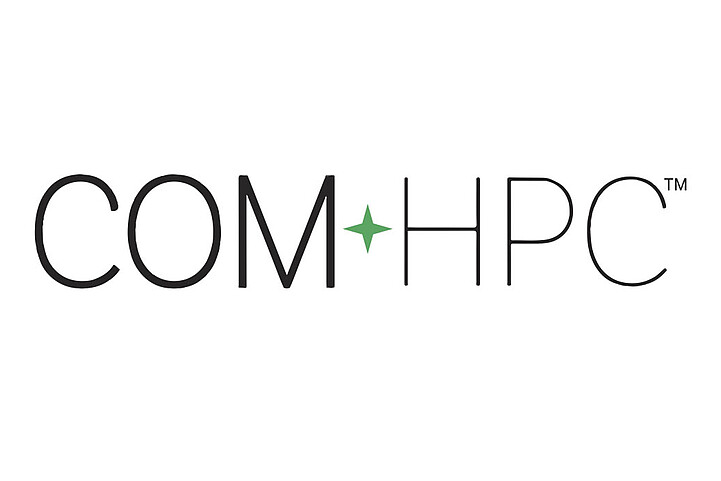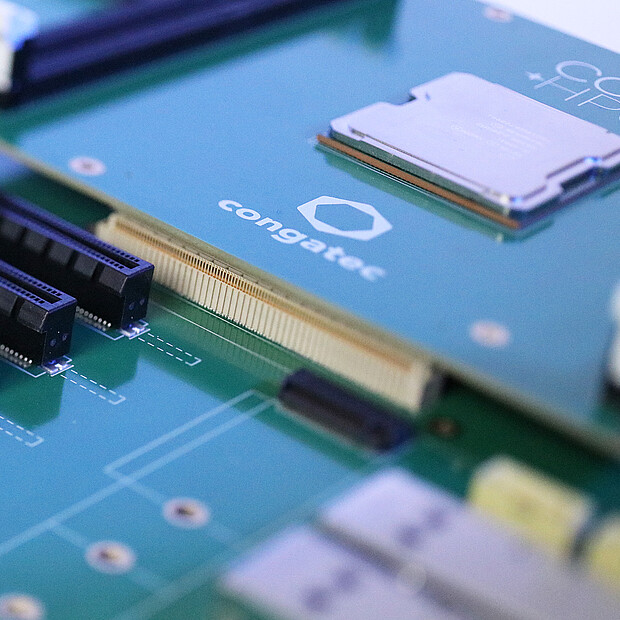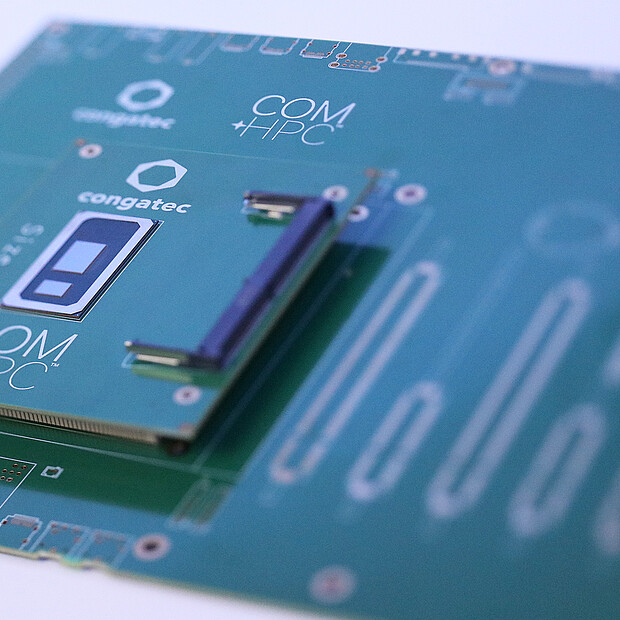congatec and iesy are discussing the latest Computer on Module standard and its impact on the market.
It has been three years since the latest Computer on Module (COM) specification, COM Express 3.0, was approved for industrial use. The embedded computer industry is now on the threshold of a new standard: COM for high-performance computers (COM-HPC), which is expected to be ratified this year. The chairman of the COM-HPC technical working group of the PICMG and marketing director at congatec, Christian Eder and Martin Steger, Managing director of the embedded computer systems provider iesy GmbH & Co. KG, will explain the effects that this new standard will bring into the market.
What are the main differences between COM-HPC and COM Express?
Christian Eder (CE): Computer-on-Modules which are based on the new COM-HPC standard are promising, among other benefits, a much higher transmission performance, many more high-speed interfaces and a significantly faster network connection. This is the result of a completely redesigned, more powerful new interface connector from module to carrier plate. Although COM Express makes this connection with 440 pins, the COM-HPC specification provides for 800 pins. This doubles the maximum number of PCIe lanes from 32 for COM Express type 7 to 64 for COM-HPC/servers. While COM Express supports a maximum PCIe Gen 3.0 with 8 Gb/s per lane, a COM-HPC module over PCIe-5.0 reaches up to 32 Gb/s per lane - four times higher than the data rate of COM Express. COM-HPC modules will therefore be used in particularly high-performance applications, for example for embedding artificial intelligence with deep learning in embedded systems or for implementing tactile Internet at edge server level.
On the subject of edge servers: What performance improvements can be expected from COM-HPC modules with regards to Ethernet connectivity?
CE: The enormous speed increase has a huge impact on connectivity performance. Current COM Express modules (type 7) at the edge server level offer a maximum of 10 Gb Ethernet per signal pair. In contrast, COM-HPC specifies 25 Gb Ethernet and more. With up to eight network connections, transfer rates of 2x 100 Gbps can then be reached. Such rates are primarily required for high-performance edge server solutions on the edge of telecommunications networks. Fast up-, down- and crosslinks have to be established in all directions: to the north in the direction of the central cloud, to the east and west in the direction of neighboring edge fog and also to the south in the direction of Industry 4.0 controls at the process level.
What impact will the changes presented by COM-HPC have on the board design and what preparations is iesy taking for this new standard?
Martin Steger (MS): The most important changes in the design of the base board will be concerning the signal routing. In the development of hardware we always work with the most modern tools to perform impedance calculations based on the layer stack. Therefore we focus on the design of printed circuit boards as well as the actual production process. With the COM-HPC standard, the higher speeds of PCIe-4.0 and 5.0 - which, as Mr. Eder pointed out, can be up to four times faster than PCIe-3.0 speeds. In addition, the maximum line lengths for the higher speeds are significantly shorter. To counteract this loss of speed, we use signal amplifiers, so-called re-drivers. Special attention is also given to the selection of suitable PCB materials and to achieving the best possible results from the product. COM-HPC offers us completely new possibilities in the conception of high performance computer architectures. Especially for the IT security applications that are of special interest to us, COM-HPC offers various benefits in design and performance.
For instance, in the field of communication, the high Ethernet bandwidth and the large number of additional PCI lanes opens up new possibilities. In general this means a new generation of embedded computer applications for a wide range of vertical markets.
As an experienced developer and supplier of embedded systems, where do you see the greatest challenges for baseboard designs with COM-HPC modules?
MS: The higher complexity of the design of new baseboard solutions requires a special know-how in the field of hardware development as well as a close cooperation with good partners. In the field of hardware development we can rely on many hundred man-years, which provides us with many advantages. We would also like to emphasize the constant and close exchange with congatec AG - without this it would be extremely difficult for us to meet the special requirements of our customers every single day. In addition, we see great challenges in the design of the heat dissipation. These systems will have processors with a power of more than 100 watts in a compact footprint, therefore effective cooling of these processors is essential to minimize the risk of overheating, reducing lifetime or degrading performance in these embedded systems. Thanks to congatec's wide experiences in this segment, we are planning to use their solutions in various projects.
Talking about footprints: Does the new COM-HPC standard specify several module classes?
CE: Yes, just as there are currently Type 6 and Type 7 high-end specifications for COM Express, we have also planned two module classes for COM-HPC that cover different application and performance requirements. Furthermore, there are two different form factors within these two module classes, similar to COM Express Basic and COM Express Compact. More precisely, we currently differentiate between server and client modules, in analogy to client/server computing. COM-HPC/server modules are tailored for use in edge server environments and require the largest possible storage capacities, a particularly powerful network connection and the ability to provide many cores to consolidate high workloads. These server-on-modules will accommodate the eight DIMM sockets referred above on a footprint of 200x160 mm, while the smaller 160x160 mm server modules will include up to four DIMM sockets. These server-on-modules will accommodate the eight DIMM sockets referred above on a footprint of 200x160 mm, while the smaller 160x160 mm server modules will include up to four DIMM sockets.
The COM-HPC/client modules have a slightly more compact design and are also available in two footprint versions - 120x120mm and 160x120mm - and are intended for use in high-end embedded computing applications. In comparison to the server modules, they offer a maximum of 2x GbE interfaces (via NBASE-T) for Ethernet connection. Furthermore, COM-HPC/client modules integrate video interfaces such as DDI and eDP/MIPI-DSI, via which - in contrast to COM-HPC/server modules - up to four independent high-resolution displays to be controlled.
What will COM-HPC systems bring to end users?
MS: We assume that server applications in general will be interesting for COM-HPC architectures. So far, there have been few solutions that fulfill the high demands of customers in this area. Especially the form factors COM-HPC Size D, as well as Size E provide us with the opportunity to rethink our previous solutions based on COM Express Basic and to use the essential advantages of COM-HPC. The use of the next Intel® Xeon® server platforms will be especially exciting here. These CPU solutions allow us to use up to 20 cores. The widely used board management controllers in the segment of server applications have been considered for the first time in the COM-HPC specification. A differentiation is made here between Board Management Controllers and Module Management Controllers. It is expected that the COM-HPC standard will be completely defined by Q4'2020 and that the first applications can be realized. Please do not hesitate to contact the iesy GmbH & Co. KG to realize your COM-HPC projects together with us.



